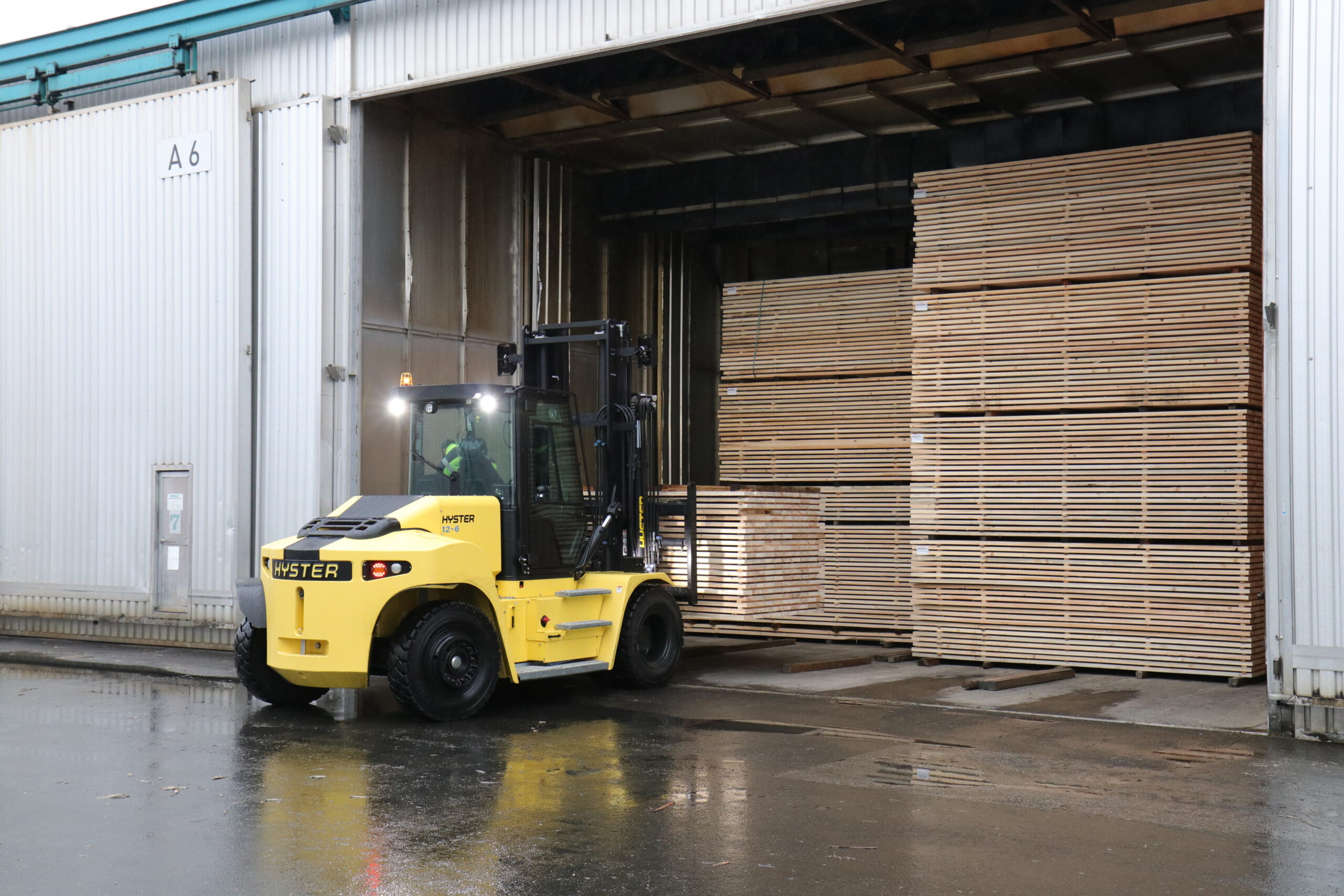Lumber industry operations like sawmills and lumber yards have long relied on internal combustion engine (ICE) power for their forklift fleets. But with today’s electric options delivering performance comparable to ICE material handling equipment, lumber operations have new questions to ask about forklift electrification and its ability to deliver the productivity they need.
Which lumber mill applications have the greatest potential for forklift electrification?
Currently, the greatest opportunities lie in shipping and receiving. For production workflows, the shift from ICE to electric forklifts is likely more distant. In production, it’s not uncommon for heavy-duty forklifts with a 36,000-pound lift capacity to push 500,000 pounds of lumber into kilns.
Although electric trucks are available in this capacity range, the duty cycles for production applications aren’t usually compatible with charging requirements. Because operators typically take their breaks at the same time, mills would likely need one charger per truck so that trucks can charge simultaneously during the break. This business case usually does not favor the cost of both the charger and electric truck relative to an ICE alternative.
But shipping and receiving operations typically use forklifts with lift capacities of around 15,500 pounds for about a shift and a half per day. Because these trucks are idle 12 hours each day, their batteries can be easily charged while the trucks are not in use, allowing for a shift to electric equipment without impacting productivity.
What can operations expect out of electric-powered trucks?
Physically, they are the same rugged, dependable forklifts that mills know and trust. In many cases, manufacturers build electric versions using the same base truck as the ICE model, replacing the diesel motor and transmission with two electric motors, one for drive and one for hydraulics.
Paired with a high-voltage lithium-ion battery, these efficient, high-power electric motors deliver performance comparable to an ICE with consistent power delivery throughout the full charge.
What else should operations know about the battery?
It’s important to know the pros and cons of different battery types.
Some manufacturers offer high-capacity electric forklifts powered by lead-acid batteries for models with lift capacities up to 36,000 pounds. Although lead acid is a well-established power source and a fit for some applications, in trucks of these capacities, lead-acid batteries are so large and heavy it can require another forklift to remove them for cleaning, watering, cooldown, and charging.
The time required for battery maintenance and charging means multi-shift operations using lead acid typically need more than one battery pack per truck, which requires extra space for storage and battery maintenance.
Lithium-ion batteries are smaller and lighter, without the intense battery maintenance and cooling requirements of lead acid, enabling a 1-to-1 ratio of batteries to trucks that eliminates the need and expense of dedicated battery storage space.
What are the clearest benefits?
Electric forklifts can help businesses reach emission reduction goals. Advanced electric options like lithium-ion batteries produce zero harmful emissions while in operation or charging.
Equipment maintenance and longevity are also advantages. Although all forklifts require maintenance, electric drivetrains have fewer components and less complexity than ICE, meaning fewer serviceable parts that require periodic maintenance.
What considerations does the industry need to address?
Grid stability remains an important consideration when evaluating a shift to electric equipment. Most mills operate up to eight high-capacity forklifts.
The amount of power required for charging eight electric trucks is significant – about a megawatt of power per day. The average U.S. house uses about 30 kilowatts per day, so the power required to charge this fleet of trucks would power an entire house for over a month. Many mills are in remote locations, where grid stability can be a challenge with an energy draw of this magnitude.
Green power generation is another area in development. Although a growing portfolio of electric forklifts produces zero tailpipe emissions, not all power used for charging comes from green or renewable sources.
Fossil fuels remain the largest energy source for electricity generation in the U.S. In 2022, 21.5% of electricity was generated from renewable sources like wind, hydro, solar, biomass, and geothermal. While significant opportunity for growth remains, the share of electricity coming from renewables has expanded steadily, up from about 12% of utility-scale electricity generation in 1990.
Forklift electrification is an increasingly practical option for lumber applications. If your operation is considering electrification, talk to an electrification expert at your local lift truck dealer or manufacturer to evaluate your options and help make the transition possible.
This blog was submitted by Hyster Co., an associate member of the Southern Forest Products Association.
